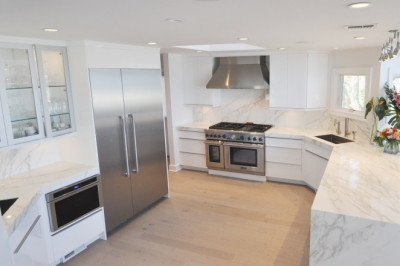views

There's nothing better than air conditioning on a hot day — and the technology keeps getting cooler. The latest air conditioner units sport digital displays, timers, remote controls, and even "smart" fans that automatically adjust speeds to maintain desired temps. They're also quieter, more energy-efficient, and easier to install and maintain than units made only a few years ago. But if you're wondering what to look for when buying an air conditioner this summer, here's what to consider:
First, what are the different types of air conditioning units?
There are four main types of air-conditioning units. They are:
1. Window-mounted air conditioners
The most common type of air conditioner is a window-mounted unit, which temporarily resides in a window opening. You can buy a cooling-only unit or a cooling/heating unit for supplemental heat if your home is located in an area with moderate temperatures. If you live in the north, it's good to remove units at the end of the warm weather season.
2. Wall-mounted air conditioners
These air conditioners are permanently mounted by attaching a metal sleeve through the wall and sliding in the AC chassis from inside. Wall-mounted units also come in cooling-only or cooling/heating varieties.
Pros:
- Aesthetically appealing
- Fits more securely than window units
- Doesn't obstruct sunlight
- No off-season storage is necessary
Cons:
- Installation can get costly— you must cut an opening through an outside wall, and larger units may require installation of a dedicated 220-volt line
- Many models don't include the exterior metal sleeve, so you'll need to purchase it separately (costing $50 to $100)
Price: From roughly $400 for a unit that will cool a 400- to a 700-square-foot room to $700 or so for a unit that will cool/heat a 1,000 square-foot room.
3. Window/wall-mounted air conditioner
This versatile type can be temporarily installed in a window or permanently mounted in a wall.
Pros:
- Versatility is ideal; can suit a rental apartment window now, or a home wall installation later
Cons:
- Usually lack window installation kits (nuts, bolts, and frame needed to secure the unit in a window)
- You may need a dedicated 220-volt circuit
Price: Like wall-mounted models, this range roughly $400 for a unit that will cool a 400- to a 700-square-foot room to $700 or so for a unit that will cool/heat a 1,000 square-foot room.
4. Portable air conditioner
This is a mobile air conditioner on wheels that can be rolled from room to room and includes a tube to exhaust heat out of a window or through an opening in a wall.
Pros:
- Easy to store at the end of the season
- Readily fits in more window sizes/types than traditional window units
Cons:
- Higher-priced than comparable window units
- Takes up floor space
- An exhaust tube must be installed each time it's moved
Price: From about $700 for a unit that will cool a 150- to a 300-square-foot room to $1,000 or more to cool a 500-square-foot room.
How do I find the right air conditioner for my room?
Right now, we are in a transitional time period in which the measurements from unit to unit are not consistent as a new standard is coming into place. This makes it challenging to compare specs across comparable units and brands.
In general, most models list their cooling capacity to help you gauge the right unit for the size room you have. Previously, this was indicated with a measurement in British Thermal Units (BTUs) based on American Society of Heating, Refrigerating and Air Conditioning Engineers (ASHRAE) testing standards. In general, the larger the room, the more BTUs you need.
When getting a Daikin aircon service, you need to check the service providers. Also, check if spare parts are available easily in the market like Temperzone spare parts.
However, the Department of Energy (DOE) introduced new standards that were published on March 10, 2020, and are required effective on and after January 10, 2025. The new standard introduces a new rating, the Seasonally Adjusted Cooling Capacity (SACC). This is a rating in BTU/hour that is meant to more accurately portray the capabilities of the machine by providing a weighted average based on a variety of test conditions, not just an average use case (think a combination of normal usage, muggy day, a particularly hot or dry day, etc.).
What size AC is right for me?
Determine what unit to buy based on the room size. In general, an air conditioner needs roughly 20-25 BTU for each square foot of living space. If a unit is too strong, you’ll waste unnecessary power, too weak and you’ll continually run the machine on full power and never feel cool enough. In general, err on the side of slightly larger to ensure comfort. You’ll want to size up if your AC is in a room with:
- High ceilings, which create more space that needs to be cooled
- High traffic — more people means more heat generated
- Lots of suns (e.g. you live in Florida or Arizona or have lots of windows)
- Near the kitchen with lots of heat-generating appliances
Conversely, if you’re in a particularly well-shaded room you can reduce capacity. Also, get Actron air service. Here are some terms that you should be aware of when shopping for an air-conditioning unit:
Amperage: Many rooms have circuits rated for a total of 15 amps of electricity. Unless the space you're installing your air conditioner in has a dedicated electrical line, take note of the unit's amps, ranging from 5 to 15 or more. Large air conditioners with 12 to 15 amps can trip the circuit breaker. In that case, you may need a dedicated line. Check if Panasonic air conditioner service is covered here too.
Dehumidification: This measurement gives you a rough estimate of how much moisture the unit removes from the air. It can range from one pint per hour to as many as 10. Higher-rate units are best for those who live in high-humidity areas.
Efficiency: To find out how energy efficient a model is, look at the manufacturer's Energy Efficiency Rating (EER), which is the BTU (also known as the cooling output) divided by the power consumption in watt-hours. In theory, the higher the efficiency rating, the less you’ll spend on home electricity bills. The Combined Energy Efficiency Ratio (CEER) is a measure of the energy used when the unit is running as well as when it is in standby mode. (To further complicate things, central ACs often use a SEER rating!) Compare EER ratings to EER ratings, and CEER ratings to CEER ratings.
Plug type: Many units have common 125V/15A, three-prong plugs that can be used in most homes. Larger models may have 125V/20V, 250V/15A, or higher plugs, requiring you to call an electrician and upgrade your circuitry. If you're replacing an existing unit, choose an air conditioner with a plug type that matches your old model.
What AC features should I look for?
Here are some important air conditioner features you'll want to look for in order to save time and energy and improve the quality of your air.
- Energy-saver switch: Normally, an air conditioner's fan runs constantly, even when the compressor is turned off. But with an energy-saving switch, the fans turn off when the thermostat turns off the compressor, saving you money.
- "Check filter" light: A visual reminder to clean or change the filter.
- Oscillating vents: An internal motor that automatically sweeps the unit's airflow from side to side, cooling the room more evenly.
- Remote control: This handy option lets you adjust the temp from anywhere in the room. Great for increasing the temperature/thermostat in the middle of the night when your body temperature drops.
- Sleep mode: Slightly raises the room's temperature setting at night to avoid nighttime chills.
- Timer: Automatically turns the unit on or off at a predetermined time when you're not there, letting a room cool down or heat up before you enter.
- Ventilation/exhaust: Lets fresh air from outside circulate into the room.
- Manufacturer's warranty: Generally ranges from one to two years for parts and labor.












